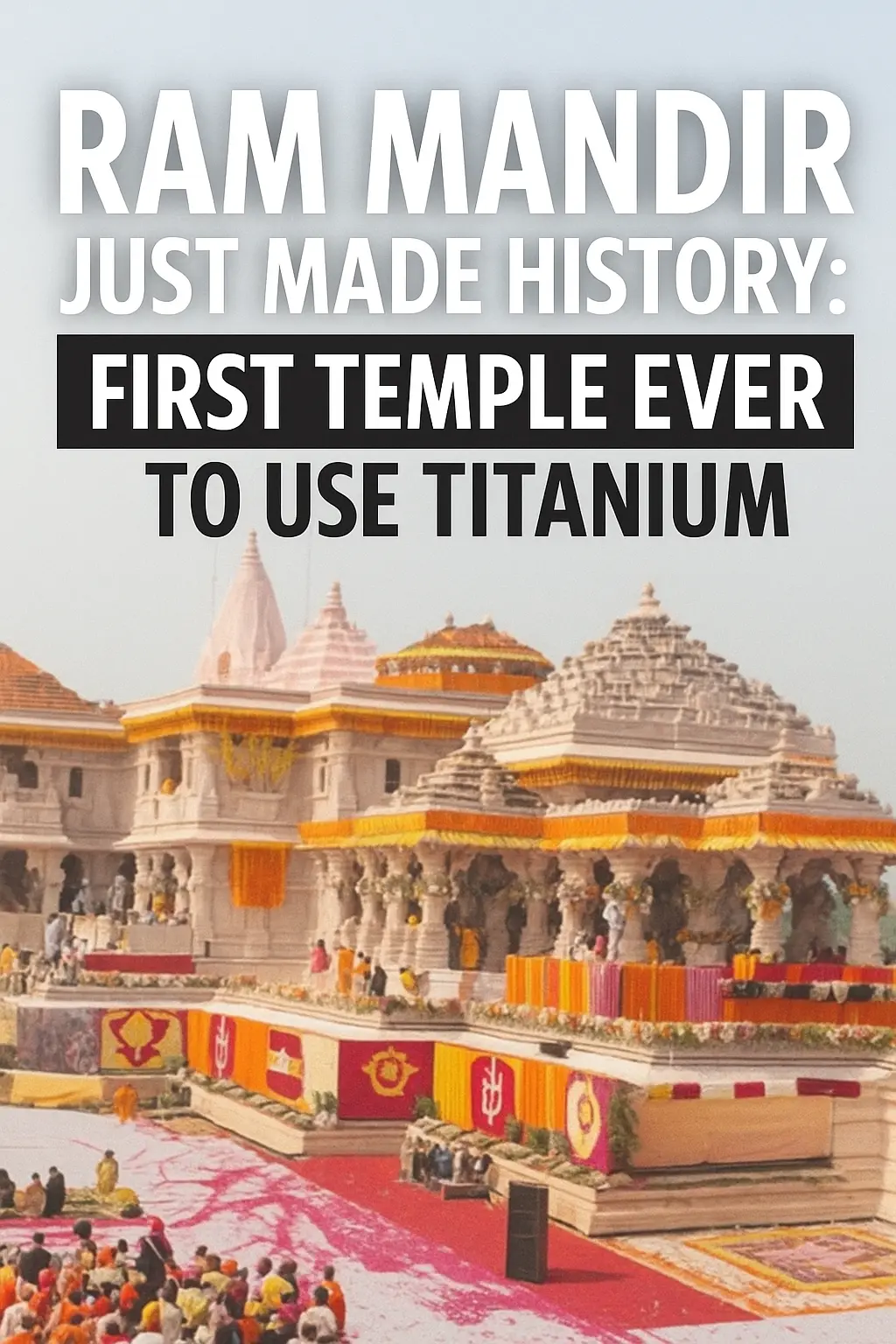“Discover why Ayodhya’s Ram Mandir pioneered titanium window grilles for unmatched durability, strength & symbolism—revealing the story no one’s told.”
Ayodhya, Uttar Pradesh – In a groundbreaking architectural decision, the Ram Mandir in Ayodhya has become the first temple in the world to use titanium metal for its window grills, setting a new benchmark for religious and heritage architecture globally. But behind this seemingly technical choice lies a fascinating blend of scientific brilliance, symbolic resilience, spiritual design, and global innovation—a story that’s far more profound than it appears.
Table of Contents
ToggleA Historic First in Temple Construction: Why Titanium?
For centuries, temples in India have used brass, bronze, wrought iron, or carved stone for window grills. But Ram Mandir’s trust and design team, in consultation with architectural experts and scientists, made the bold move to incorporate titanium—a metal known primarily for aerospace engineering, submarines, and medical implants.
The reason? Titanium is virtually indestructible.
“Titanium grills will last over 1,000 years with no rust, no corrosion, and no structural damage—making them ideal for a monument expected to stand for eternity,” said Nripendra Misra, Chairperson of the Ram Mandir Construction Committee.
This is not just about durability—it’s about crafting legacy through material science.
The Engineering Marvel: Durability Meets Divine Design
Titanium has one of the highest strength-to-weight ratios among all metals, meaning it offers unmatched durability without adding unnecessary weight to the sandstone-and-granite structure. This decision is part of the Ram Mandir’s strict no-iron, no-steel policy, intended to preserve its sanctity and longevity.
The grills, fitted on the temple’s first floor, were installed with dry-joint interlocks, avoiding any welding or screws—again, a nod to ancient Indian construction techniques fused with modern metallurgy.
“We are not just building a temple; we are building a symbol of permanence,” Misra added.
Beyond Strength: The Symbolism and Spiritual Meaning of Titanium
While most media coverage has focused on titanium’s strength, the symbolic choice of this metal has gone underreported. In many cultures, titanium symbolizes eternity, divine strength, and purity—qualities deeply aligned with Lord Ram’s identity as Maryada Purushottam, the eternal ideal.
Unlike iron or brass, titanium reflects natural light in a soft, diffused glow, creating an ethereal ambience during sunrise and sunset. Inside the sanctum, this subtle shimmer plays with shadows and light, amplifying the spiritual aura—an effect no other temple in the world currently replicates.
This makes the titanium grills not just protective barriers, but architectural storytellers, narrating tales of light, faith, and time.
Sustainability and the Silent Green Revolution at Ram Mandir
Another untold angle is the eco-conscious vision behind this choice. Titanium requires almost zero maintenance. Its natural oxide layer makes it corrosion-proof, eliminating the need for chemical treatments, paints, or anti-rust applications—all of which pollute local soil and water.
It also reduces the carbon footprint of future repairs, making Ram Mandir not only a religious epicenter but a green temple for the modern age.
Cost, Craftsmanship, and a World-Class Feat
While titanium is significantly more expensive than steel or iron, its selection reflects the temple trust’s commitment to quality over cost, tradition over trend.
Crafting titanium grills requires precision engineering. Special metal-forging teams were brought in, and designers had to develop custom dies to shape the metal into the intricate temple designs—a feat usually reserved for aerospace components, not religious structures.
“This is where India’s spiritual heritage meets its scientific ambition,” said a senior architect involved in the project.
A Message to the World: India’s New Identity in Temple Architecture
By using titanium, Ram Mandir sends a message far beyond Ayodhya—that India is ready to redefine what heritage construction can look like. The move bridges ancient spirituality with futuristic innovation, blending art with metallurgy, faith with durability.
In a time when most global religious monuments use conventional materials, Ayodhya has quietly become the first to dare otherwise—and succeeded.
With this bold step, the Ram Mandir has done more than just establish a world record. It has challenged centuries-old architectural norms and created a new language of sacred engineering. Titanium, a metal of the future, is now permanently welded—not physically, but spiritually—into the narrative of Lord Ram’s legacy.
This isn’t just an upgrade in materials. It’s a monumental leap in how we build faith itself.













